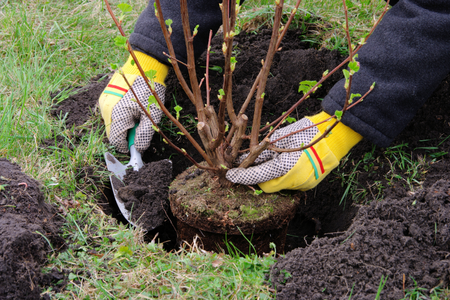
Having the right tools makes any job easier, and that goes for gardening too. To help you decide what you need for your garden, here’s our guide to our top ten garden tools.
10 essential garden tools
-
Trowel – great for quick and easy digging in soil that’s already been dug over. Ideal for digging small holes and for use when planting up pots.
-
Hand fork – ideal for weeding, and harvesting small root vegetables like carrots and beetroot.
-
Digging spade and digging fork – these are the tools you need when you’re preparing a bed for planting. Sturdy and long-handled, with a broad head, the spade is ideal for turning the soil or shovelling compost, and the fork is great for digging out stubborn roots and breaking up clods of earth.
-
Border spade and border fork – lighter than the digging spade and fork, with narrower heads, these are just the thing when you’re working in the border among existing plants, digging holes or lifting clumps of perennials.
-
Dutch hoe – the answer to keeping down annual weeds in summer, and you can use it standing up! Push the flat blade along the ground just below the soil to cut off yearly weeds at the roots. Do this on a dry day, so that the cut-off plants will wither and die on the ground.
-
Weeding knife – also called a patio weeder, this handy garden tool has a right-angle hooked blade perfect for getting to grips with those pesky weeds that grow in the gaps between paving slabs.
-
Secateurs – something no gardener should be without. There are two main types of secateurs: bypass and anvil. Bypass secateurs have two blades and a scissor-like action, making for a very accurate and clean cut. They’re ideal for cutting soft stems and for light pruning. Anvil secateurs have a single cutting blade that closes against a flat plastic or metal plate. Their cutting action will slightly crush whatever they’re cutting, so they’re best used on woody stems and dead wood.
-
Loppers – the tool to turn to when you’re pruning branches too thick to be cut with secateurs. The long handles give good leverage, making it easy to chop sturdy branches. Like secateurs, they have either a bypass or an anvil cutting action, with anvil loppers being the best choice for cutting dead wood and bypass loppers working best on live wood. Loppers should be able to cope with branches up to 3-5cm (1.5-2in) in diameter
-
Pruning saw – for branches thicker than about 5cm (2in) in diameter, this is the tool you’ll need. A pruning saw has a straight handle and blade, allowing you to cut individual branches without damaging the surrounding growth.
-
Hedging shears – rather like an overgrown pair of scissors, with long, sharp blades, hedging shears are great for cutting a neat edge along a hedge or trimming topiary.
For more guidance on the best tool for your gardening jobs, come and visit our centre – our friendly staff are always happy to help.




